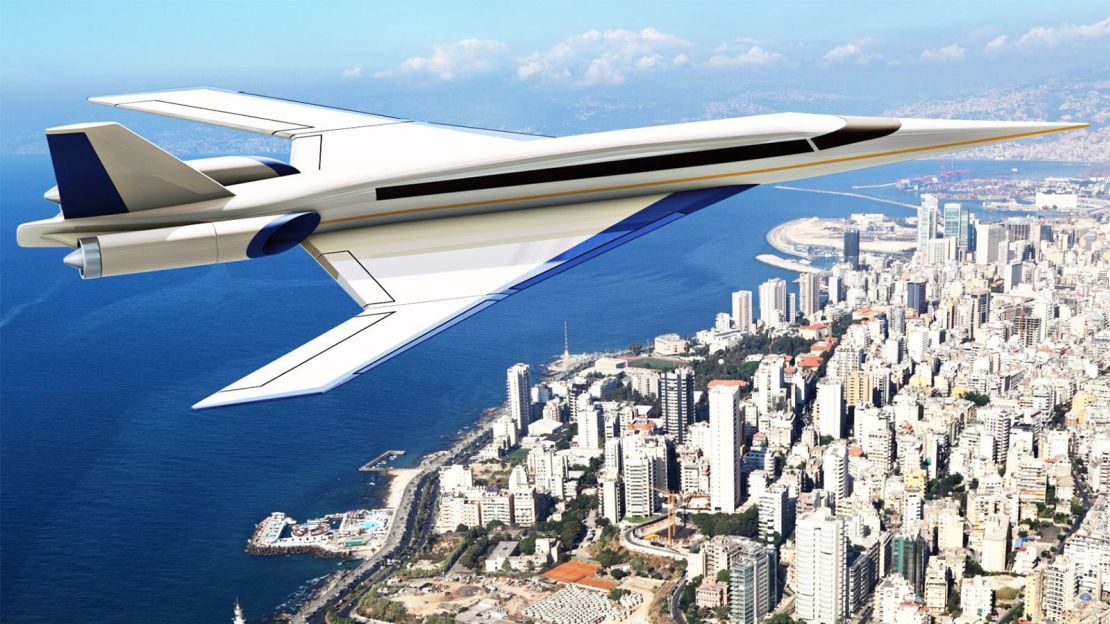There was a time when the possibilities of air travel seemed limitless. Boeing’s 747 “Jumbo Jet” supersized commerical aviation, then Concorde took it supersonic.
But these milestones were half a century ago, way back in 1969.
Concordes have since been confined to museums due to unsustainable operating costs and its rivals scrapped due to tech challenges and lack of demand.
Fast forward to today and supersonic travel could once again become a reality with a batch of new passenger-carrying aircraft currently in the later stages of development.
In February 2019, Nevada-based Aerion took a step closer to seeing its supersonic AS2 aircraft certified by teaming up with Boeing. The AS2 is a sleek business jet which will cruise at Mach 1.4, or 1,000mph, and bring routes like London to New York, Dubai or Beijing closer by hours.
Ambitiously, it’s being designed to run completely on biofuels. Boeing’s provision of engineering, manufacturing and flight test resources should see it fly in 2023.
The AS2 is aimed at business travelers, with a 12-passenger capacity suited to capturing the biz jet market.
Likewise, Boston-based Spike Aerospace is developing the Spike S-512 supersonic business jet, which could hold up to 18 passengers.
Meanwhile, another aircraft in development is planning to bring back commercial travel by supersonic airliner.
The Boom Supersonic is a sleek 55-seat jet with delta wings reminiscent of early Concorde designs. It’s already attracted 76 pre-orders and a $10 million investment by Japan Airlines.
So might we soon be enjoying speedier travel across large distances?
Or is this a niche product reserved yet again for the wealthy at the cost of those on the ground who must endure sonic booms and declining air quality from noisy jets?
Dealing with the boom and the emissions
Some say there could be thousands of supersonic jets in our skies by the mid-2030s, but to become a reality, this new fleet of fast planes must overcome the issues faced by their predecessors.
For Concorde, these were chiefly the aircraft’s thirst for fuel and the fact it was banned from going supersonic over land to prevent sonic booms causing misery to those living under its flight path.
A sonic boom is the explosive noise brought about by the shock waves generated when an object travels through air at a speed faster that sound.
Dan Rutherford, author of a recent report for the International Council on Clean Transport (ICCT), predicts a new supersonic age could mean that those living under flight paths between Europe and the United States would have to endure booms “about 50 times per day.”
He also suggests the fleet of new supersonic aircraft “would emit an estimated 96 (88 to 114) million metric tons (MMT) of CO2 per year, and an additional 1.6 to 2.4 gigatonnes of CO2 over their 25-year lifetime.”
Manufacturers of these new fast jets insist they’ll comply with environmental regulations.
The AS2 is already on track to meet subsonic noise requirements as well as emissions standards and Aerion chief executive Tom Vice says it’ll be the launch point “for the future of regulatory-compliant and efficient supersonic flight.”
Aerion has also announced plans to run the AS2 on synthetic paraffinic kerosene (SPK) biofuel, which it says could reduce its CO2 emissions by at least 40%.
Meanwhile, forecasts say the Boom aircraft’s sonic discharges will be around 30 times quieter than Concorde’s, and that not only would it be more fuel-efficient, but fares would be 75% lower too.
“We understand that there are ongoing efforts to establish international noise and emissions standards appropriate for civil supersonic aircraft,” Japan Airlines tells CNN Travel. “We believe Boom is aiming to develop an environmentally acceptable aircraft in line with the international standards.”
As for the Spike S-152, it’s being developed with patent-pending Quiet Supersonic Flight technology which Spike Aerospace claims will allow it to hit full cruising speed of Mach 1.6 without creating a loud sonic boom at ground level.
But what about the benefits?
Back in the 1960s, supersonic jets were originally developed to reduce the time of long-haul travel.
For business users it means a more productive day with less time lost out of the office or through jet lag, and for leisure travelers distant destinations are suddenly much closer.
If the new breed of supersonic airliners can overcome the monetary and environmental obstacles, we may once again have travel times between London and New York, for example, cut to under three hours.
It’s likely that the first passengers will still be those with deep pockets; low-cost airlines and their passengers are not the target market here.
But these initial steps have the potential to likely to trickle down into the mainstream until traveling faster than the speed of sound is standard.
The realities of supersonic travel

The new jets could, however, be subjected to tougher new environmental regulations.
The UN’s International Civil Aviation Organization (ICAO) concluded in February that existing aircraft standards weren’t sufficient to cover faster aircraft and work is now underway to develop new ones.
Clean air campaigners ICCT acknowledge that strict limits on supersonic speeds over land could impact the uptake of the new technology, particularly for shorter flights.
“The implication is that it will be harder now for manufacturers to get a supersonic airliner to market,” ICCT’s Rutherford tells CNN Travel.
And he says that while manufacturers of smaller business jets have committed to meeting subsonic noise standards, research data indicates that larger commercial airplanes will have bigger environmental consequences.
That said, as the first supersonic transport aircraft in 50 years, AS2, Spike and Boom are likely to be stepping stones towards better and more efficient technology which has the benefits of speed without the cost to the environment.
Matt Falcus is a British aviation writer, author, and editor of the Airport Spotting blog, which delivers daily news on airline and airport operations around the world.




















